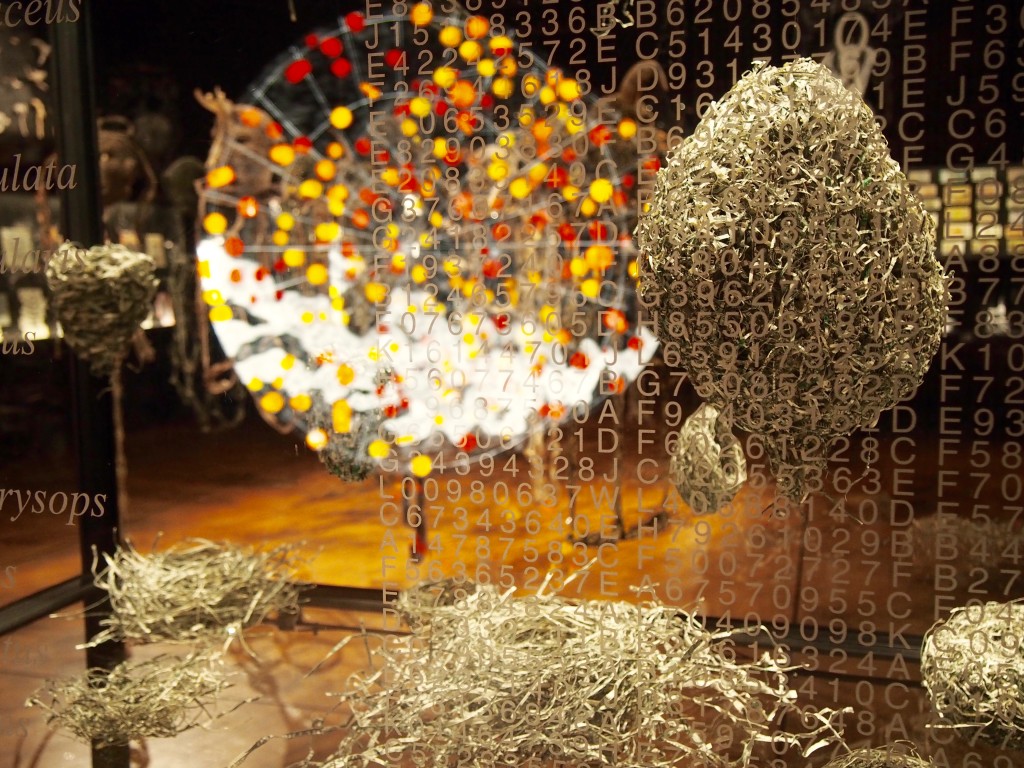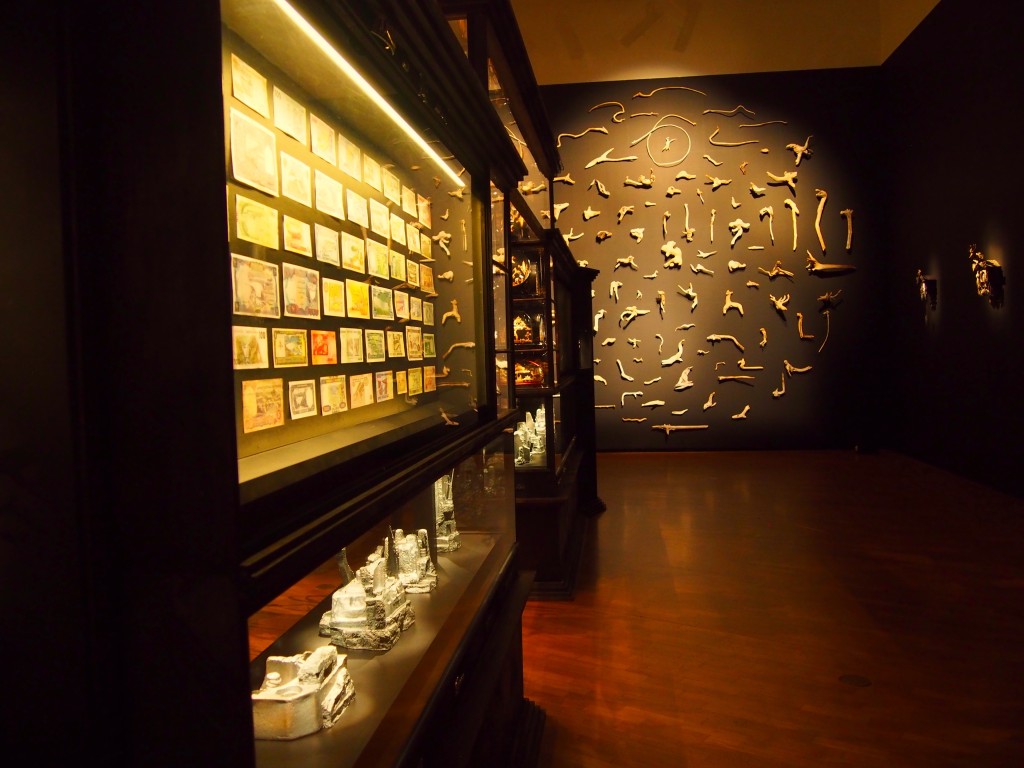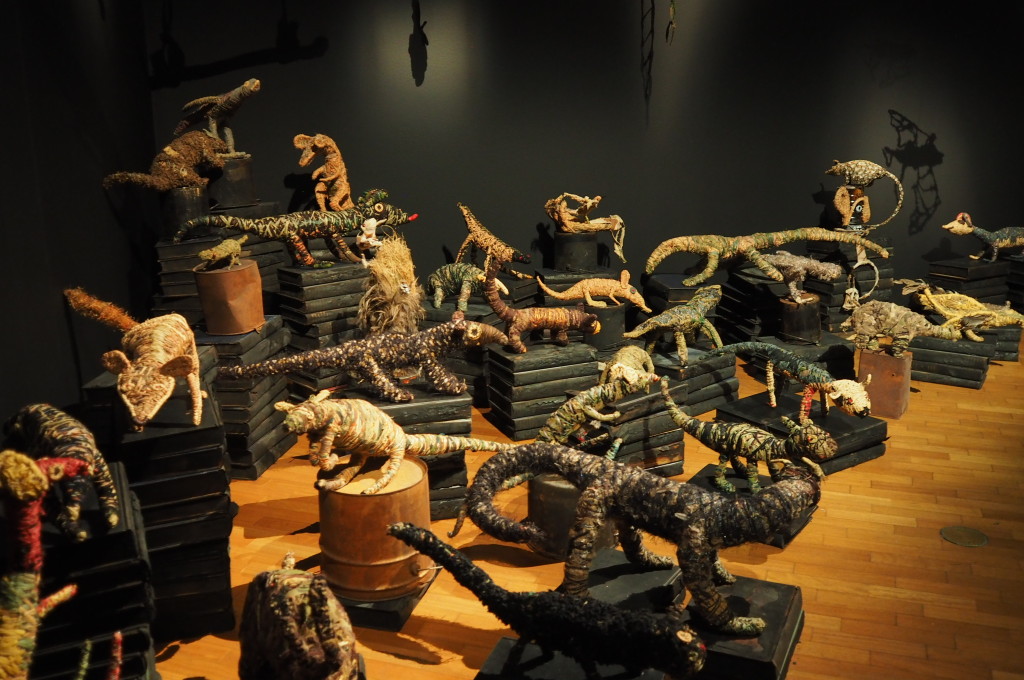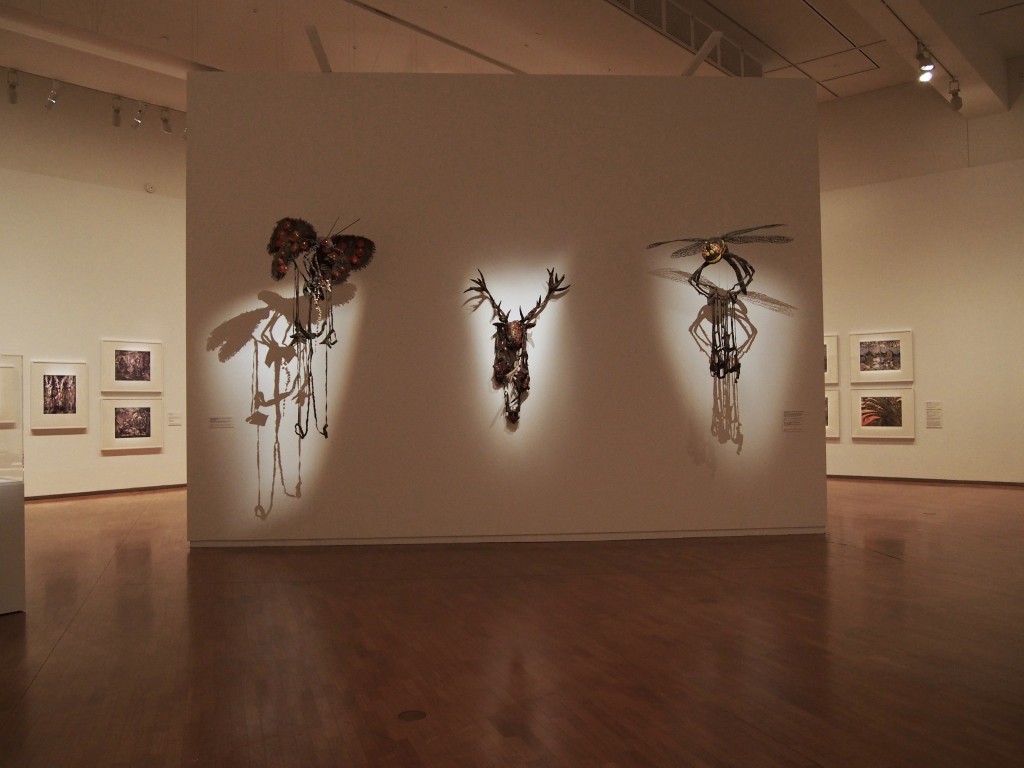The National Gallery of Australia’s latest exhibition Wrong Way Time showcases leading Australian contemporary artist Fiona Hall, featuring works from the gallery’s own collection and the original artworks exhibited at the 2015 Venice Biennale’s Australian Pavilion.
Starting her career as a photographer in the late 1970s, Fiona Hall expanded her repertoire into painting, sculpture, garden design and film. She is not limited with the range of art forms, or by the material incorporated and used to construct her artworks, using bread, driftwood, bank notes, and even sardine tins; an item that she is prominently known for.
She put together the first room; a dark walled, methodically and thoughtfully lit room, in just 18 months, and created the 1000 pieces it holds from scratch.
First impressions are of being in a museum of natural history; with cabinets enclosing artworks in the centre of the room, and the walls adorned with clocks and found items. This is a verbatim replica of the room displayed at the 2015 Venice Biennale with the original works and cabinets shipped directly from Venice. The room is based on the 19th century cabinets of curiosity idea, and with every look you see something new and different.
I found myself moving in close to pull apart artworks with my eyes and see the raw materials and techniques used in their creation. This gave me an appreciation for the artwork itself and the ideas behind it. The exhibit is meant to be viewed clockwise, and there are no labels, ensuring that you are not distracted by names, but rather immerse yourself in the work. Fiona Hall works with and develops environmental, political and social ideas. She displays them subtly, conveying a strong message that is relatable and valued.
While the majority of works are created by Fiona herself, she worked with women from the Tjanpi desert weavers group to create pieces for the work Kuka irititja (Animals from another time), where they used natural grasses, camouflage gear, twines, buttons and other fibres and materials to build native animals. The animals are all placed on bird books (British Museum’s General Catalogue of Printed Books: Ten-Year Supplement, 1956-1965).
Her most famous work that are part of the National Gallery collection are her sardine tins called Paradisus Terrestis and can be found in the second room. By contrast, this room is flooded with light, the white walls drawing you in to the artwork in a different manner to the first room. Here, you can appreciate Fiona’s earlier work and the foundation for her most recent artworks. She doesn’t discard ideas; she develops them and returns to them like an old friend that ages well with time.
When you visit, we have a few things for you not to miss in that first room:
- stare at the grim reaper shadow
- count the US dollar notes (and their serial numbers)
- savour the bear rug
- marvel at the sardine tins
- wait for the clocks to chime
- look through the looking glass
- count the animals in the corner
- watch the floor stand time,
- find the Spiders and the crickets
- look for the 13 cue ball
- find all five dice
Wrong Way Time can be seen at the National Gallery of Australia from 22 April until 10 July 2016.
Price : Free
On social:
Hashtag: #WrongWayTime #FionaHall
Instagram: @nationalgalleryaus











